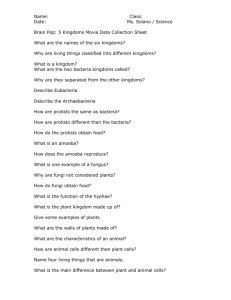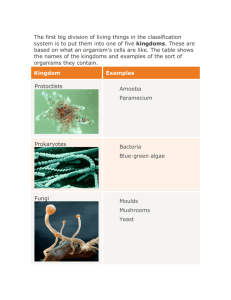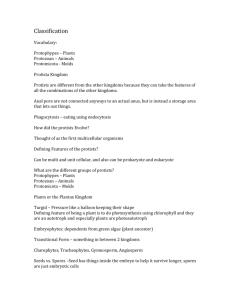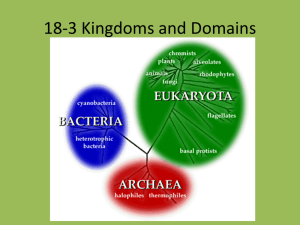Chapter 18 Classification
advertisement
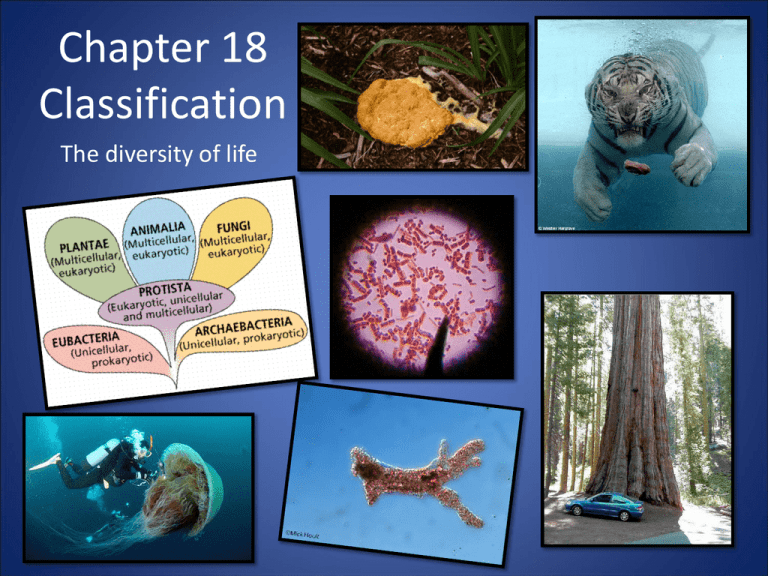
Chapter 18 Classification The diversity of life Why is it necessary to classify? • 1.5 million species on the planet so all creatures must be organized with a universal system. We call this taxonomy. • Scientists cannot use common names because they change depending on where you live. For example: cougar, panther, puma, mountain lion all represent the same animal. It has a scientific name – Felis concolor Scientific Names • Carolus Linneaus – Swedish botanist who began the modern naming system. • Developed a two word naming system called binomial nomenclature (latin) • 2 name naming system • Scientific names are • Descriptive • In Latin Ursus maritimus • 2 words – capitalize the first letter of the first word and lowercase everything else. • First word is Genus second word is species Examples scientific name = genus + species • • • • Homo sapien Canis familiarius Felis domesticus Drosophilia melanogaster Human Dog Cat Fruit fly Classification System • We organize all life on Earth into 9 levels. Each level is called a taxon. • Domain is the largest – 3 large groups (see below) • Species is the smallest Classification Levels Example: Grizzly bear Human Taxonomy Levels Changing Number of Kingdoms History of Kingdoms: • 1700’s - 2 kingdoms –Plants and Animals • 1800’s – 3 kingdoms – Plants, Animals, Protists (pond water critters) • 1950’s – 5 kingdoms – Monera (bacteria), Protists, Fungi, Plants and Animals • 1990’s – 6 kingdoms - Eubacteria, Archaebacteria, Protists, Fungi, Plants and Animals. Section 18-3 Kingdoms and Domains • Shown below are the three domains and the 6 modern kingdoms we use today. Domain: Bacteria and Archaea 1. Kingdom: Bacteria • unicellular • prokaryotic • cell wall contains a special molecule called peptidoglycan. 2. Kingdom: Archaebacteria •Live in extreme environments •Cell wall lacks peptidoglycan Domain Eukarya 3. Kingdom Protista • Eukaryotic organisms (most are one celled) • Shows the greatest variety of organisms • Photosynthetic or heterotrophic Domain Eukarya 4. Kingdom Fungi • Absorptive heterotrophs – absorb nutrients through their bodies • Feed on dead or decaying organic matter • Many are multicellular • Yeast is unicellular Domain Eukarya 5. Kingdom Plantae • Multicellular • Autotrophs (do photosynthesis) • Cellulose in cell wall Domain Eukarya 6. Kingdom Animalia • • • • Multicellular Heterotrophic Eukaryotic Invertebrates and Vertebrates
